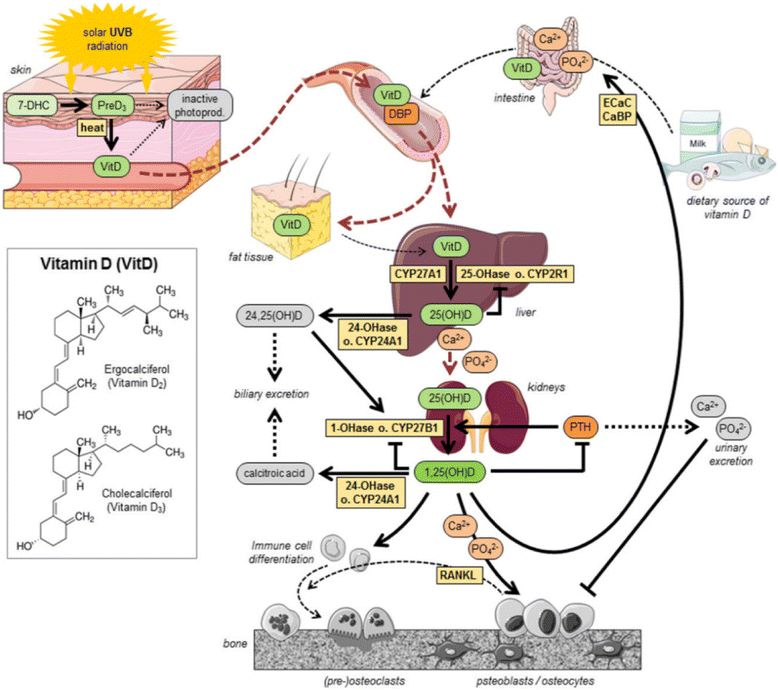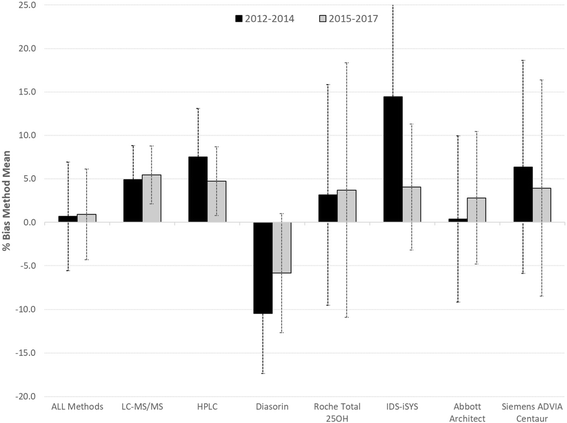The vitamin D paradox in Black Americans: a systems-based approach to investigating clinical practice, research, and public health - expert panel meeting report
- PMID: 30044889
- PMCID: PMC5954269
- DOI: 10.1186/s12919-018-0102-4
The vitamin D paradox in Black Americans: a systems-based approach to investigating clinical practice, research, and public health - expert panel meeting report
Abstract
The Office of Dietary Supplements, the National Institute on Minority Health and Health Disparities, the National Institute on Aging, and the National Institute of Diabetes and Digestive and Kidney Diseases, all components of the U.S. National Institutes of Health, co-sponsored an expert panel meeting to discuss the vitamin D paradox in Black Americans. The paradox is that despite markedly low (or "deficient") measures of vitamin D status in Black Americans, the incidence of falls, fractures, or osteopenia are significantly lower compared to White American counterparts with similar vitamin D status. Six panelists were invited to engage in guided discussions on the state of the science with respect to key knowledge gaps impacting vitamin D status and bone health. They were also asked to reflect on best approaches for advancing the science. A central theme throughout the discussions was that there may be many factors that impact Vitamin D levels in Black Americans and understanding these factors may be key to understanding mechanisms for improving bone health in all populations. Data presented showed that although adiposity, skin pigmentation, vitamin D binding protein polymorphisms, and genetics all contributed to differences in 25(OH)D levels in Black vs. White Americans, no one factor alone could fully explain the vitamin D paradox in Black Americans. However, the panelists did agree that the paradox is significant and warrants further investigation. There was consensus that Black Americans gained no skeletal benefits from high doses of vitamin D supplementation, and that high levels of the biomarker of vitamin D status, serum 25-hydroxyvitamin D or 25(OH)D, in this population are almost certain to result in adverse effects. Some panelists proposed that additional studies are needed so that the Institute of Medicine (IOM) can better define the safe upper limits of vitamin D intake in this and other subpopulations. Others suggested a need for better, more generalizable biomarkers of bone health to advance the science.
Keywords: Black vs. White Americans; Bone health; Dietary reference intakes; Paradox; Vitamin D.
Conflict of interest statement
Not applicable.The authors declare that they have no competing interests.Springer Nature remains neutral with regard to jurisdictional claims in published maps and institutional affiliations.
Figures



References
-
- Institute of Medicine Committee to Review Dietary Reference Intakes for Vitamin, D. and Calcium et al. In: The national academies collection: reports funded by National Institutes of Health, in Dietary Reference Intakes for Calcium and Vitamin D. Ross AC, et al., editors. Washington (DC): National Academies Press (US) National Academy of Sciences; 2011.
-
- National Institutes of Health, Office of Dietary Supplements . Vitamin D: moving toward evidence-based decision making in primary care. 2014.
Publication types
LinkOut - more resources
Full Text Sources
Other Literature Sources

